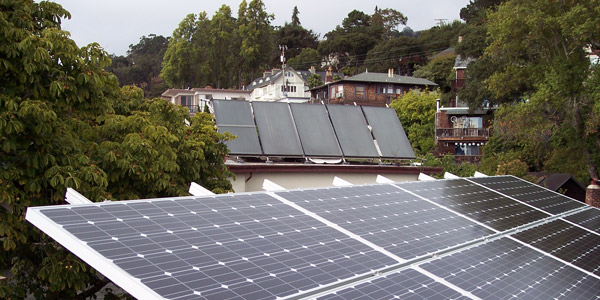By Jason Fordney
The growth of distributed energy resources on the California grid will require new approaches and better coordination between system operators to avoid problems, state officials heard last week at a California Energy Commission workshop.
Representatives from utilities, DER companies and others advised members of the CEC and the California Public Utilities Commission on the various issues related to integration of new technology onto the electric grid.
The grid is becoming more decentralized, and the amount of DERs — including rooftop solar, energy storage and a host of other technologies — is expected to grow significantly in California in the next three to five years. Fleshing out communication methods between transmission operators, distribution utilities, DER providers and CAISO is one of the biggest tasks associated with incorporating the new systems.
DER companies are trying to open new markets at various points in the electricity delivery system, including selling to utilities and retail customers, as well as through development of market mechanisms at CAISO. The ISO wants to enable that process to help balance output from renewables, and next month will present its Board of Governors with a suite of related new rules stemming from its Energy Storage and Distributed Energy Resources (ESDER) Phase 2 initiative. (See CAISO Finalizes Rules for DR, Distributed Generation.)
Distribution system operators (DSOs) should be able to advise DER providers and communicate with them on grid integration and operational issues, Pacific Gas and Electric Director of Integrated Grid Planning Mark Esguerra said. CAISO should also provide day-ahead DER schedules to DSOs, as well as develop a pro forma DER integration agreement.
The ISO often dispatches DERs without knowing if they are feasible on the distribution system and when there is little visibility on their effect on load and the transmission-distribution interface, Esguerra said. DERs are different from demand response and energy efficiency resources because distributed energy is not an absence of load, but rather additional energy being put into the system that must be managed.
Tesla Business Development Manager Damon Franz said DERs can mitigate the effects of energy infrastructure on water and the environment. He also argued they provide a wide range of services, including backup power, lowering energy costs and managing the intermittency of renewables.
Franz highlighted the importance of data on what needs DERs can satisfy. He requested that permitting be made easier and said interconnection for energy storage “should be no more complicated than simply deploying a device.”
But Jim Baak, program director at Vote Solar, noted that California utilities are being asked or required to forego capital investment in favor of DERs, which might not be in the interest of their shareholders. There should be a wider focus beyond policies and process changes, and state policy objectives should align with financial goals of stakeholders, he said. There are also concerns about overinvestment in DERs in the wrong locations.
“My concern is the vision is somewhat myopic,” he said. “What we really hope to achieve with distributed resources is to achieve policy goals.”
James Barner, resource planning engineer with the Los Angeles Department of Water and Power (LADWP), said that without an engaged interconnection process, DERs will affect reliability, including the problem of overgeneration at certain times. The utility plans to have 1,500 MW of distributed solar in the next 15 years, but DERs do create new problems on the system, he said, and rooftop and carport solar cannot be curtailed.
LADWP recognizes that DERs “add a lot of diversity to our renewables portfolio,” he said. Renewables represented 21% of the utility’s portfolio in 2016, but that is expected to grow to 65% by 2036. The utility plans to soon issue a Distributed Energy Resources Integration Study.
The CEC on June 14 issued a white paper on Coordination of Transmission and Distribution Operations in High Distributed Energy Resource Electric Grid that lays out the schedule and goals for integrating DERs. The agency said its next Strategic Transmission Investment Plan will include information and data on distributed generation.



